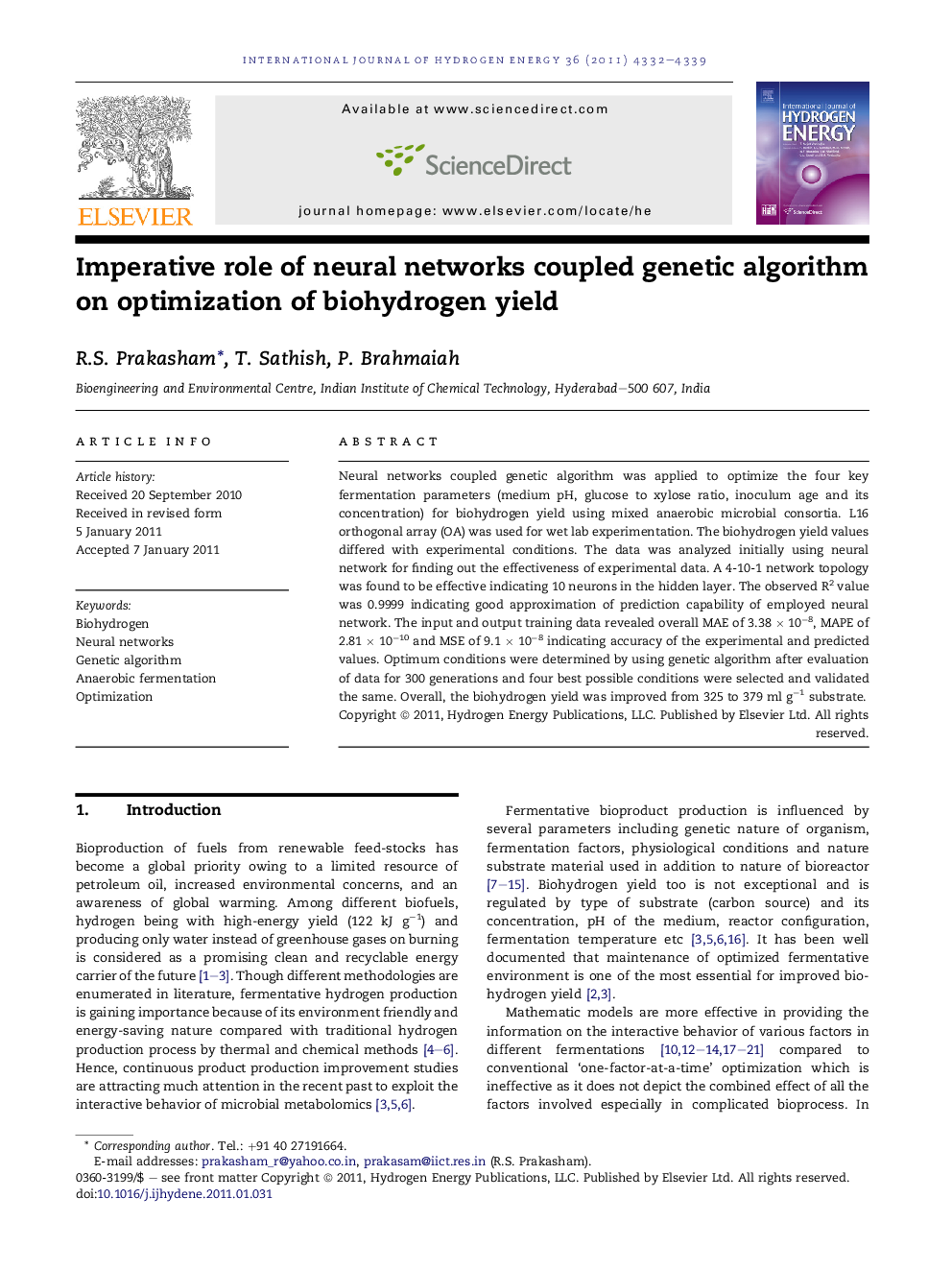| Article ID | Journal | Published Year | Pages | File Type |
|---|---|---|---|---|
| 1276218 | International Journal of Hydrogen Energy | 2011 | 8 Pages |
Neural networks coupled genetic algorithm was applied to optimize the four key fermentation parameters (medium pH, glucose to xylose ratio, inoculum age and its concentration) for biohydrogen yield using mixed anaerobic microbial consortia. L16 orthogonal array (OA) was used for wet lab experimentation. The biohydrogen yield values differed with experimental conditions. The data was analyzed initially using neural network for finding out the effectiveness of experimental data. A 4-10-1 network topology was found to be effective indicating 10 neurons in the hidden layer. The observed R2 value was 0.9999 indicating good approximation of prediction capability of employed neural network. The input and output training data revealed overall MAE of 3.38 × 10−8, MAPE of 2.81 × 10−10 and MSE of 9.1 × 10−8 indicating accuracy of the experimental and predicted values. Optimum conditions were determined by using genetic algorithm after evaluation of data for 300 generations and four best possible conditions were selected and validated the same. Overall, the biohydrogen yield was improved from 325 to 379 ml g−1 substrate.
